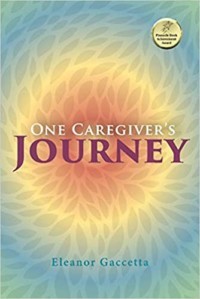Title: One Caregiver’s Journey
Author: Eleanor Gaccetta
Publisher: BookBaby
ISBN: 978-1543959352
Genre: Self-Help/Non-Fiction
Pages: 216
Reviewed by: Barbara Bamberger Scott
Pacific Book Review
Drawing from personal journal entries and intelligent insight, author Eleanor Gaccetta recounts highlights from her mother’s last years, during which she was totally responsible for the elderly woman’s daily care.
Gaccetta took on the job of full-time caregiver unselfishly, moving herself and her mother from a rural setting, twice, to a more easily navigated residence close to needed medical services. She began journaling and found in the daily work a new way of living and approaching many often-distressing situations. Getting up in the middle of the night to change her mother’s underwear and mop her bathroom floor became a natural part of the day, as did learning to complete all shopping or away from home chores in under an hour per outing. Her mother was a second-generation Italian immigrant whose religious roots run deep; much of her day was spent in praying aloud and singing spiritual songs. Her 100th and 101st birthdays were sweet occasions for family, with the elderly lady sometimes cognizant enough to sing her own “Happy Birthday” and recognize a few family members. Her passing at age 102 was slow but clear, at home, attended by Gaccetta and a hospice nurse. When her body was carried from the house, a sudden burst of wind arose, making the author think of an old Native American belief that after death, the Great Spirit comes as a wind, to carry the soul to heaven.
The author’s narrative is realistic, honest and at times, lightly humorous. She urges those who are or may become caregivers for their loved ones to give up on the kinds of routines of sleep, meals and housework common to most home settings. With an elderly and ill person in the home, change is a constant. Other strong advisories include learning to watch out for scammers who prey on the elderly, and for dishonest or incompetent people volunteering help or information. One “red flag” is whether such people have any medical training, and another is how eager they seem to refer the patient to the organization they represent. Gaccetta resisted moving her mother to hospice because she could not see that the care in such a place would be better than what she could receive at home, aided by nurse visits and doctor house calls. Many lessons were learned, from how to manage necessary paperwork to how to positively welcome each new day with a sick, forgetful, and slowly failing relative.
Gacetta’s book is indeed a primer for anyone considering taking on a caregiver role, and a tribute to her “wonderful and loving” parent. Underlying her intimate recollections is the unspoken strength that she herself possesses and amply demonstrates in this vivid “caregiver’s journey.”


